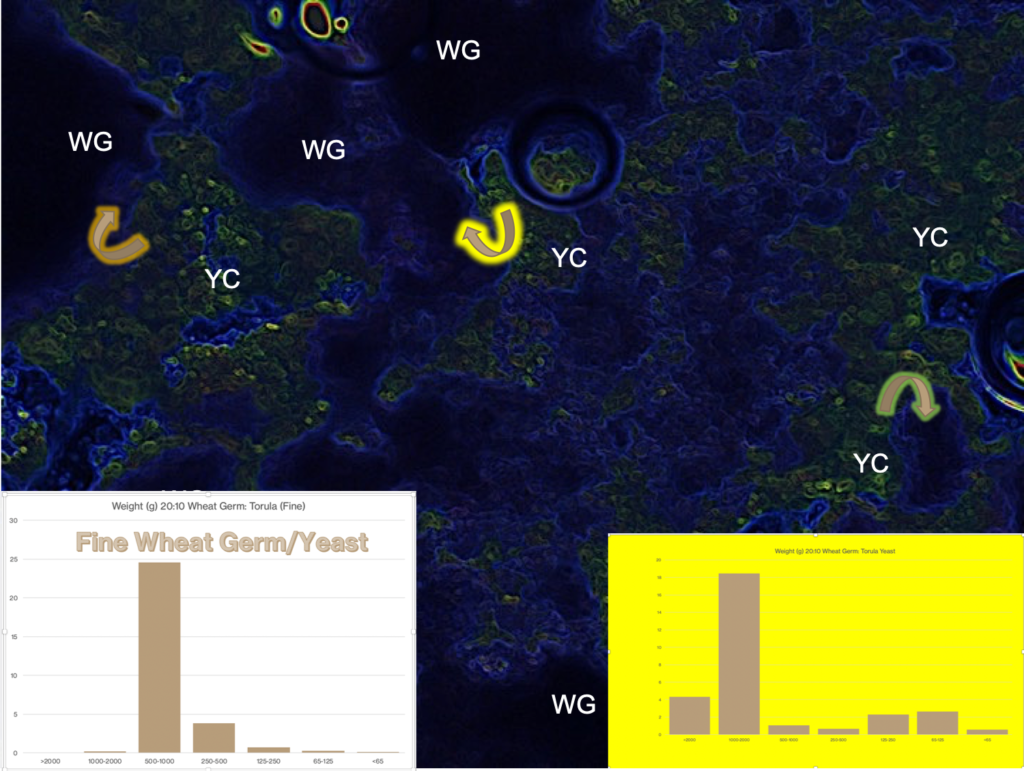In the previous post, I mentioned the concept of granulometry as part of the approach to understanding matrix relationships–in this case, the particle-particle interactions.

The above figure is a representation of the image in the previous discussion where the following modifications were made to the original figure: 1) the color pattern was changed in an image processing step performed in Microsoft PowerPoint. The technique changes colors and adds emphasis and contrast to the different portions of the image; 2) portions of the figure that contain wheat germ (WG) and yeast concentrations (YC) were marked, and some of the suggested interactions were depicted with the arrows; 3) the insets represent two different kinds of granulometric analyses where the coarse diet solids (wheat germ and torula yeast) on the lower right and fine particles on the lower left were separated with a set of mechanised sifting screens. Particles within each size range were weighed and the size distributions graphed with the bar graphs. The bar graphs represent these particle sizes: > 2000 microns; 1000-2000 microns; 500-1000 microns; 250-500 microns; 125-250 microns; 65-125 microns; and < 65 microns. The different sizes of particles between the coarse and fine particles were produced by using mixtures of wheat germ (20 g) and torula yeast (10 g) of non-milled solids vs. the same proportions of the solids that had been run through a cutting mill.
In association with the differences in particle size, the diet made from the coarse particles had a firmness (gel strength) that was about 1.5 times as great as that of the gel made with fine particles. This is an example of the kinds of effects that matrix interactions can influence in various artificial diets. Part of our current research in the Insect Rearing Education and Research Program at NCSU is to discover the various kinds of matrix characteristics that arise from use of various diet materials and diet-processes. A central line of inquiry deals with the physicochemical characteristics of different factors in diet production.
